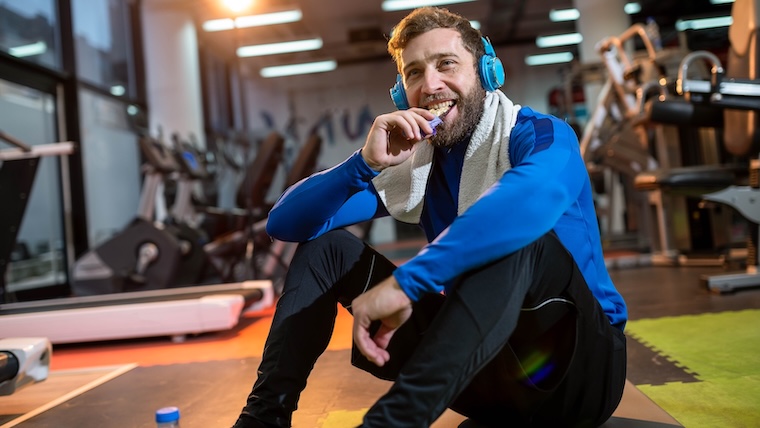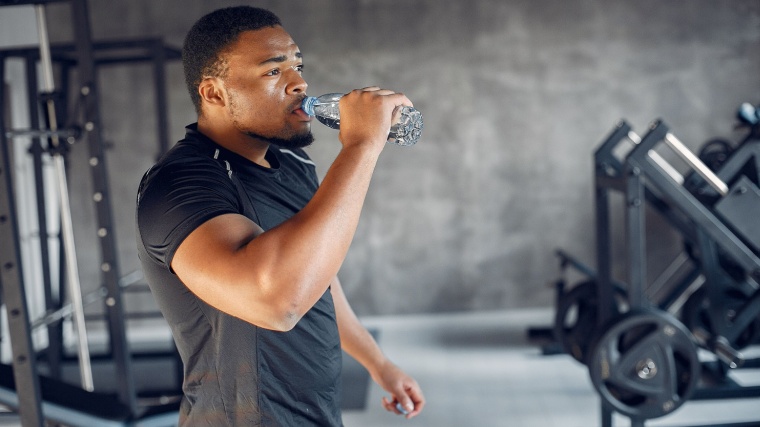Intermittent fasting (IF) has gained popularity as an effective method for weight loss and improving overall health markers. (1) However, bodybuilders and athletes, who are focused on preserving lean muscle mass during a cutting phase, cautiously approach it. Concerns arise over fasting’s potential to impact energy levels during training and the risk of losing muscle and fat.
New study…intermittent fasting with or without resistance training and its effect on weight loss, fat loss, [and] lean mass.
—Dr. Layne Norton
A recent study published in March 2025 in the Journal of the International Society of Sports Nutrition sheds light on these concerns. Dr. Layne Norton provided an in-depth analysis, exploring the methodology and findings.
New Study on Fasting
The study investigated the effects of eight weeks of time-restricted feeding with and without resistance training, compared to a control group. (2) The researchers focused on key outcomes such as fat mass, weight loss, and lean muscle mass while examining additional factors like anxiety, blood pressure, and sleep quality.
The study was conducted with untrained participants to explore the independent effects of IF and its combined impact with resistance training. Participants were divided into four groups:
- Intermittent Fasting Only: Engaged solely in intermittent fasting.
- Control Group: Lived without any dietary or exercise restrictions.
- Resistance Training Only: Performed resistance training without dietary changes.
- Combined Group: Followed intermittent fasting and the same resistance training routine as the “Resistance Training Only” group.
Participants limited their food consumption to a 10-hour daily window for the intermittent fasting regimen. This setup allowed researchers to examine these practices’ isolated and synergistic effects.

“Many will say it’s got to be eight, or six, or four, or two, or one, or half a second…moving the goalpost if they don’t like the study results,” Norton contested. “The reality is an eight-to-10-hour feeding window is pretty standard amongst many who follow intermittent fasting.”
Results
The IF group experienced weight loss compared to the control group; the resistance training group did not lose weight. The group combining intermittent fasting with resistance training also saw weight loss, similar to the intermittent fasting-only group. These findings highlight IF’s potential benefits.
While the intermittent fasting group lost weight, there was no significant reduction in fat mass.
The majority of the weight loss actually came from a reduction in lean mass.
—Dr. Layne Norton
Over the eight weeks, participants in the IF group lost an average of 2.6 kilograms, with 2.4 kilograms coming from lean mass. Fat mass reduction was slight but not statistically significant.
The resistance-trained group that did not follow intermittent fasting experienced a body recomposition effect. Although their overall weight remained unchanged, they achieved a notable reduction in fat mass alongside a significant increase in lean mass.
They lost about 1.1 kilograms of fat mass on average and gained 1.6 kilograms of lean mass on average.
The group that combined intermittent fasting with resistance training significantly reduced fat mass. “They lost over three kilograms of fat mass but did not gain significant lean mass,” Dr. Norton confirmed.
Takeaway
Resistance training effectively builds lean muscle while reducing fat. In this study, intermittent fasting alone did not significantly reduce fat mass. Participants experienced a loss of lean muscle mass, a finding not unique to this study.
There are quite a few studies now showing that intermittent fasting can cause a reduction in lean mass.
—Dr. Layne Norton
Dr. Norton suggested that traditional intermittent fasting, involving an eight to 10-hour eating window, likely poses no risk of lean mass loss during resistance training. However, studies indicate that narrower eating windows associated with intermittent fasting might reduce lean mass. (3)(4)(5)

Should you try intermittent fasting? Dr. Norton believes it depends on your goals and how they align with your priorities. If intermittent fasting helps you maintain a calorie deficit, lose weight, and shed fat, it can be a viable option, especially if building maximum muscle mass isn’t your top priority. Choosing that approach is fine if other diets haven’t worked for you and you find IF easier to follow.
Intermittent fasting is probably not the best approach for gaining muscle mass for better performance in bodybuilding or powerlifting. To minimize the potential negative impact of IF on lean body mass, Norton suggests incorporating regular resistance training, scheduling sessions during your eating window, and ensuring multiple protein-rich meals within that window to meet daily protein intake goal.
More In Research
- Train Past Failure for the Thickest Calves
- Is the Overhead Press Worth It for Hypertrophy?
- 7 Fitness Myths That Could Be Sabotaging Your Goals
References
- Song, D. K., & Kim, Y. W. (2023). Beneficial effects of intermittent fasting: a narrative review. Journal of Yeungnam medical science, 40(1), 4–11. https://doi.org/10.12701/jyms.2022.00010
- Cui, T., Sun, Y., Ye, W., Liu, Y., & Korivi, M. (2025). Efficacy of time restricted eating and resistance training on body composition and mood profiles among young adults with overweight/obesity: a randomized controlled trial. Journal of the International Society of Sports Nutrition, 22(1), 2481127. https://doi.org/10.1080/15502783.2025.2481127
- Xie, Y., Zhou, K., Shang, Z., Bao, D., & Zhou, J. (2024). The Effects of Time-Restricted Eating on Fat Loss in Adults with Overweight and Obese Depend upon the Eating Window and Intervention Strategies: A Systematic Review and Meta-Analysis. Nutrients, 16(19), 3390. https://doi.org/10.3390/nu16193390
- Chow, L. S., Manoogian, E. N. C., Alvear, A., Fleischer, J. G., Thor, H., Dietsche, K., Wang, Q., Hodges, J. S., Esch, N., Malaeb, S., Harindhanavudhi, T., Nair, K. S., Panda, S., & Mashek, D. G. (2020). Time-Restricted Eating Effects on Body Composition and Metabolic Measures in Humans who are Overweight: A Feasibility Study. Obesity (Silver Spring, Md.), 28(5), 860–869. https://doi.org/10.1002/oby.22756
- Lowe DA, Wu N, Rohdin-Bibby L, Moore AH, Kelly N, Liu YE, Philip E, Vittinghoff E, Heymsfield SB, Olgin JE, Shepherd JA, Weiss EJ. Effects of Time-Restricted Eating on Weight Loss and Other Metabolic Parameters in Women and Men With Overweight and Obesity: The TREAT Randomized Clinical Trial. JAMA Intern Med. 2020 Nov 1;180(11):1491-1499. doi: 10.1001/jamainternmed.2020.4153. Erratum in: JAMA Intern Med. 2020 Nov 1;180(11):1555. doi: 10.1001/jamainternmed.2020.6728. Erratum in: JAMA Intern Med. 2021 Jun 1;181(6):883. doi: 10.1001/jamainternmed.2020.8941. PMID: 32986097; PMCID: PMC7522780.
Featured image via Shutterstock/ZR10